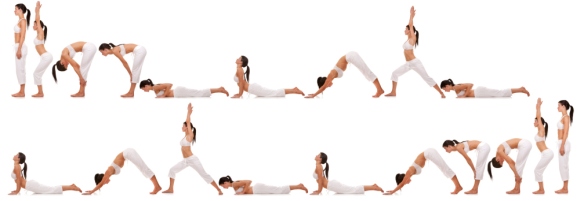I’ve noticed that many friends over the age of 60 have switched their modes of exercise to less aggressive or intensive sports. Most of them were prompted by whispers from sore elbows and knees and/or aching muscles. This growing stiffness reflects in increase in Vata dosha that inevitably accompanies age.
According to Ayurveda, there are three stages of life. The first stage is Kapha-predominant. Childhood is all about growing and increasing structure. The second stage is Pitta-predominant. This stage begins at puberty and continues until we are around 50. The third stage is Vata-predominant and continues through the rest of our life. Many times what we consider signs of normal aging are actually the results of a growing imbalance of Vata: stiffness, memory loss, insomnia. By putting extra attention on keeping Vata in balance, as we grow older, we can often eliminate these symptoms.
Vata also increases when the weather is cold and dry. This is why many people experience more pulled muscles and joint problems in the winter, as well as during their later years.
As Vata increases, an imbalance in Vata can make the joints drier and more stiff. When Vata moves from its proper location is can start to dry out Kapha dosha, cutting down on Kapha’s natural lubricating abilities. To counter this tendency, daily oil massage can be extremely effective. Using warmed sesame oil (or olive or coconut oil for those with lots of Pitta); massage the joints in a circular motion each morning before your bath. If you are already experiencing joint pain, follow your massage by applying three to five minutes of moist heat to the joint.

In addition, regular stretching of the joints and muscles through yoga and sun salutations helps keep the body limber. No matter what form of exercise you prefer, adding regular yoga exercises to your routine will help you enjoy your favorite sport for years to come. Yoga is unique in that it can strengthen and lengthen the muscles. Most forms of exercise that strengthen muscles also tend to shorten them. Shorter muscles tend to become stiffer due to the increase in collagen. Yoga, however, lengthens the muscles while they are being strengthened, and can prevent the increase of collagen.
Avoid straining when you exercise. Yoga (and any other form of exercise) should always be comfortable. Feel the stretch, but ease up if there is discomfort.
If you have significant joint problems, be sure to get medical attention. Joint problems commonly reflect ama in the system. Specific recommendations regarding diet, herbs, Ayurvedic topical preparations and Panchakarma can be made by an Ayurvedic expert.
For more information on consultations and Panchakarma, visit The Raj Ayurveda Health Spa website:








 Spring is the time to get up and get moving. Exercising in the proper manner can improve our resistance to disease and make us stronger and more vital. Improper exercise, however, can actually weaken our system.
Spring is the time to get up and get moving. Exercising in the proper manner can improve our resistance to disease and make us stronger and more vital. Improper exercise, however, can actually weaken our system.